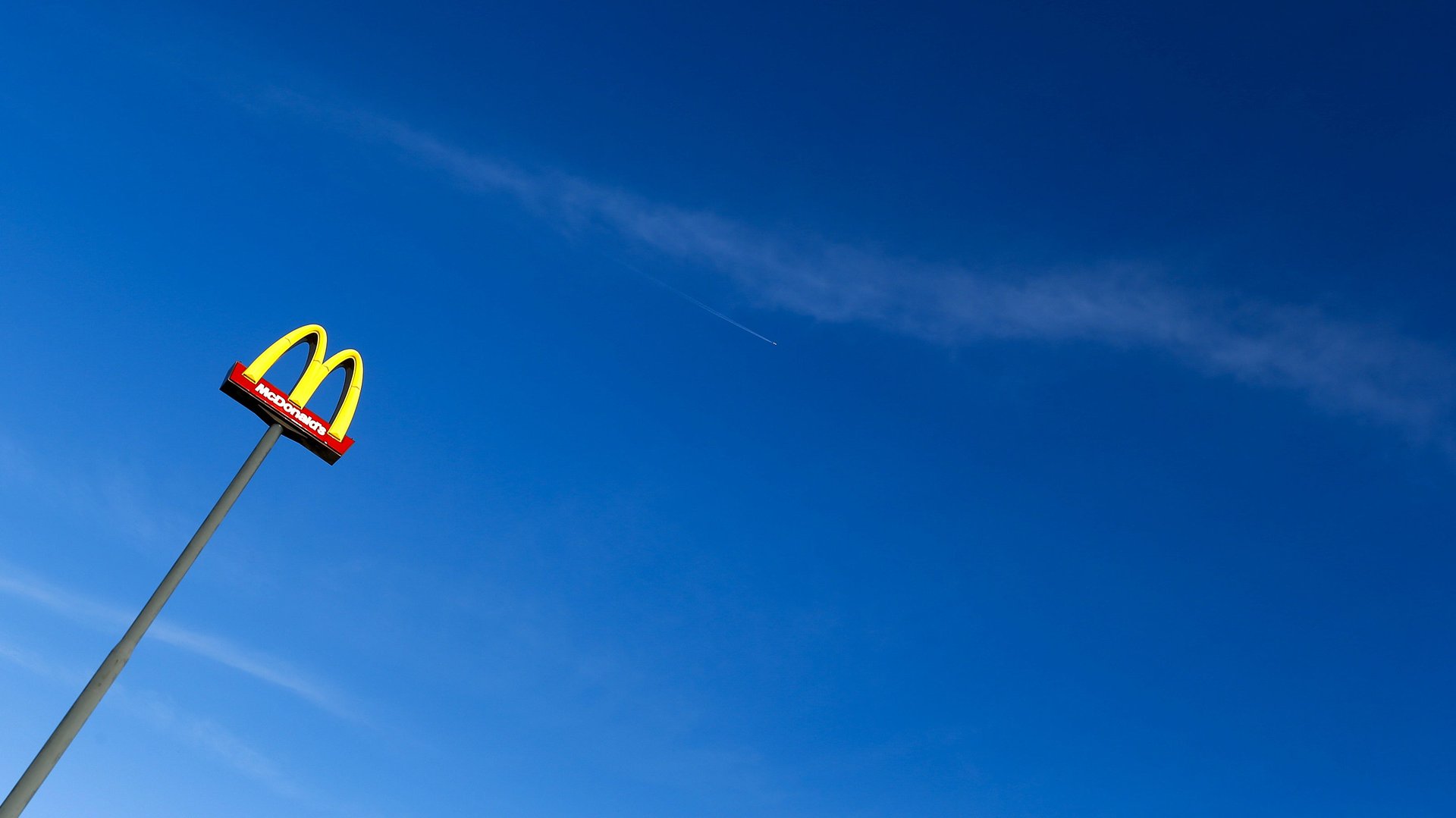Chipotle would kill to be McDonald’s right about now
Not long ago, Chipotle was the darling of America’s dining market. Throughout 2014, the burrito chain logged double-digit growth in comparable restaurant sales, while also cultivating loyalty and adoration among its fans. Fast food was out. Fast casual was in, and Chipotle was its standard-bearer.


Not long ago, Chipotle was the darling of America’s dining market. Throughout 2014, the burrito chain logged double-digit growth in comparable restaurant sales, while also cultivating loyalty and adoration among its fans. Fast food was out. Fast casual was in, and Chipotle was its standard-bearer.
At the same time, the trends toward fresher and healthier food that were boosting Chipotle were sinking McDonald’s. In late 2013, the Golden Arches embarked on what would become seven-straight quarters of declining comparable sales in the US. The ugliest of those was a 3.3% drop in Q3 2014—the same quarter Chipotle reported a whopping 19.8% jump in comparable sales. McDonald’s was getting battered by more than just shifting consumer tastes. It suffered a potentially catastrophic employment ruling at the hands of the National Labor Relations Board; it faced a public relations crisis in the growing fast-food labor movement; it tried and failed to make Ronald McDonald less terrifying.
But heading into 2016, the fortunes of Chipotle and McDonald’s have completely reversed. Just take a look at the stock performance of each over the last two years:
So what happened?
Let’s start with Chipotle. The outstanding comparable store sales that buoyed Chipotle’s stock in 2014 became a drag in 2015. Despite the company’s repeated warnings that double-digit growth would be hard to maintain long term, Wall Street was still disappointed last year with Chipotle’s increasingly tepid results. Then, in the final months of 2015, the health scares began. E. coli. Norovirus. A restaurant closed for temperature violations. The stock plummeted. For the latest quarter—which Chipotle is expected to report results for in early February—the company has projected a sales drop of 8% to 11%. In a report released Tuesday (Jan. 5), Credit Suisse said it expects Chipotle’s same-store sales to continue falling through Q3 2016, “barring a heroic promotional/marketing effort to win back customers.”
Now for McDonald’s. Early in 2015, Steve Easterbrook, a 20-plus-year company veteran, took over as chief executive and outlined his vision for McDonald’s to become a “modern, progressive burger company.” It was the closest McDonald’s had come to admitting outright that it needed to become more like fast-casual competitors Chipotle, Shake Shack, and Five Guys. Over the next several months, McDonald’s pushed out a slew of initiatives. It committed to cage-free eggs and reduced antibiotics in chicken. It began testing customized burgers, debuted all-day breakfast, and even gave some workers a raise. Analysts aren’t bullish on any one item, but the combination seems to be working. In October, McDonald’s reported its first great quarter in two years. Its stock is at an all-time high.
“McDonald’s has regained at least some of its mojo—and impressively, it has done so at a time in which most major segments of the domestic restaurant industry are enduring sequential deceleration in same-store sales trends,” Nomura analysts wrote Monday, upgrading McDonald’s to “buy” from “neutral.”
For the first time in years, McDonald’s has the momentum in America’s quick-serve food market, and Chipotle—which was actually owned by McDonald’s until 2006—is the one struggling to reclaim it.